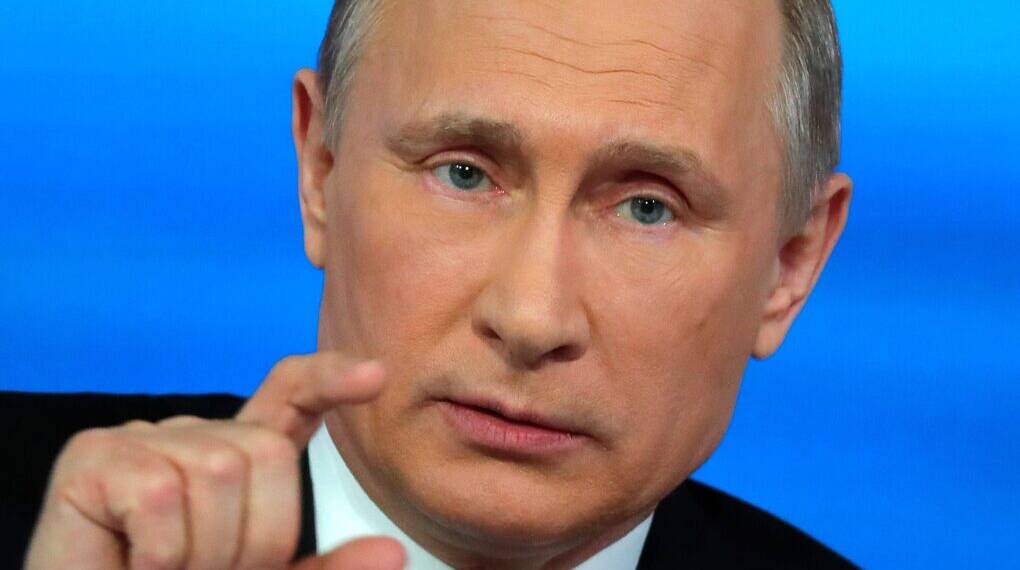Leaked top-secret Russian military documents have revealed an alarming blueprint for how President Vladimir Putin’s regime could exploit a potential Chinese invasion of Taiwan to carry out preemptive strikes against key military and civilian infrastructure across Japan and South Korea.
The documents—obtained by The Financial Times and reportedly originating from the Russian Armed Forces’ Combined Arms Academy—outline detailed plans to target 160 critical sites, including airfields, radar stations, naval bases, power plants, transportation tunnels, and industrial hubs. Though the files are dated from 2014, experts believe the information remains strategically relevant and reflects current Russian military thinking.
Chaos as Cover
Strategic analysts believe Moscow intends to use the global distraction caused by a potential Taiwan crisis to launch a coordinated offensive in northeast Asia, neutralizing any regional threats posed by Japan or South Korea during a larger East-West confrontation.
According to the leaked materials, the purpose of striking these targets is to prevent Tokyo and Seoul from regrouping or providing military support to Western forces in any future conflict involving Russia, China, or North Korea.
International relations expert James Brown of Temple University in Tokyo told This Week in Asia that while the documents are a decade old, “they reflect standing doctrines that require only minor updates to be applicable today.”
Civilian Targets Included
While many of the targets listed are expected military sites, such as regional command centers, air bases, and naval ports, the documents also shockingly include civilian infrastructure that is usually protected under international law. Among the most concerning targets are:
Japan’s Kanmon Tunnel, a key transportation link between Honshu and Kyushu islands.
Tokai Village nuclear facility near Tokyo.
Chemical plants in Busan, South Korea.
Steelworks in Pohang, South Korea.
One specific target, Japan’s radar base on Okushiri Island, is described in detail in terms of building layouts and the projected impact of a Kh-101 cruise missile strike.
The Kh-101 Missile: Precision or Propaganda?
Much of Russia’s strike capability in these plans centers on the Kh-101 cruise missile—known by NATO as the AS-23 “Kodiak.” Designed to fly below radar at altitudes of 30 to 70 meters and with a range of 3,500 kilometers, the Kh-101 was touted as a precision weapon capable of carrying nuclear or conventional warheads.
However, real-world performance in Ukraine has cast doubt on its reliability. U.S. defense officials note a high failure rate in the missile’s recent deployments—failing to launch, veering off course, or not detonating on impact.
Nonetheless, in 2014, the missile was being promoted within the Kremlin as a war-winning technology, shaping the strategic calculus outlined in these plans.
Renewed Militarism and War Readiness
The leak comes at a time of rising global tension. Russia’s Deputy Defence Minister Andrei Belousov recently declared that the country must be prepared for a military conflict with NATO within the decade.
“Russia is approaching the red line,” President Putin warned in a December speech, accusing NATO of provocation by increasing its presence near Russian borders. He claimed Western nations are “scaring people with a mythical Russian threat,” even as his own forces intensify their war in Ukraine.
Despite enormous battlefield losses and reliance on support from North Korea and Iran, Moscow claims it is regaining momentum in Ukraine. Belousov boasted of recruiting more than 427,000 troops in 2024 alone, averaging 1,200 new personnel daily, as Russia shifts to a full-scale war economy.
Europe Alarmed by Kremlin’s Intentions
The revelations have amplified fears in Europe that Putin is preparing for an even broader confrontation. Officials in Germany, Estonia, and the European Union warn that Russia may be capable of launching a full-scale war against NATO allies by the early 2030s.
German intelligence chief Bruno Kahl stated that the Kremlin’s playbook would not involve a traditional invasion but likely begin with cyberattacks, sabotage, and destabilization operations. Germany has already accused Moscow of plotting to sabotage NATO’s Geilenkirchen Air Base, home to the alliance’s advanced AWACS surveillance aircraft.
NATO officials, including Admiral Rob Bauer, have urged Western nations to transition into a “wartime production posture,” highlighting the risk of running out of critical ammunition and supplies if conflict breaks out.
An Urgent Wake-Up Call
Former Lithuanian Prime Minister Andrius Kubilius emphasized the need for immediate and ambitious action: “If we take these assessments seriously, then that is the time for us to properly prepare, and it is a short one.”
With the leaked Russian documents providing a chilling preview of potential multi-front warfare, the question facing global leaders is no longer if but when the next major flashpoint might erupt—and whether they’ll be ready.








